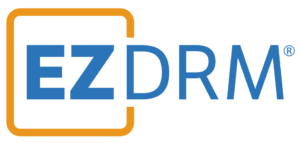MediaTech Radar is a monthly newsletter put together by IABM’s Head of Knowledge Lorenzo Zanni. It focuses on a spotlight topic in MediaTech and reflects on a series of past, present, and future business developments in the industry. In this edition, our spotlight topic is MediaTech Convergence.
MediaTech Spotlight: MediaTech Convergence
A spotlight topic in MediaTech.
- At the end of this month, ISE 2024 will take place in Barcelona. In previous newsletters, I have often talked about how this show has come to represent one of the most visible signs of convergence between broadcast and pro-AV technology – this is my report on ISE 2023. In this newsletter, I wanted to provide an update on this convergence and the drivers behind it.
- IABM research in 2023 has shown that the average percentage of revenues that MediaTech suppliers derive from non-media markets such as corporate and education has increased significantly, surpassing 50%. The corporate market has grown to become the most important non-media market served by MediaTech suppliers.
- We have also talked about the implications of this trend for suppliers. Their technology offerings have, for example, gradually become more adaptable (to different use cases) and usable (by non-technical staff) to increasingly cater to non-media markets. Moreover, some suppliers reported that they have had to invest in training and support capabilities to appeal to non-media customers – non-media buyers care about training and support more than their broadcast counterparts, according to our data.
- As reported in my previous newsletter, the broadcast market is currently under financial pressure due to an unfavorable macroeconomic conjuncture, which I expect will continue next year. Tightening budgets in broadcast and media might incentivize MediaTech suppliers to pursue opportunities in non-media sectors with more conviction, as highlighted by some suppliers this year.
- Arguably, the same trend does not apply to non-media organizations buying MediaTech. Take the English football club Manchester City as an example. When it reported a record £712m revenues in November 2023, the COO of its parent City Football Group Roel De Vries said (source: FT, requires subscription): “The majority of our fans don’t have the chance to physically come to the stadium every single game, so the biggest area we need to invest in is in the content part of the business.” You can see how this logic could also apply to large corporates wanting to engage more effectively with remote employees – yes, the move to hybrid and remote working is another driver of convergence.
- What about technology? Our research has shown that general-purpose technologies such as cloud and AI have become key trends in MediaTech, and this is a major driver of convergence between technology used in media as well as non-media industries. Other trends such as Gen AI and low-code/no-code development (and the combination of the two) promise to further democratize technology for the masses. While talking about these trends in relation to broadcast and media may seem far-fetched, there are already some examples of them in our sector – see the work done by Skyline Communications on low-code apps. Convergence, as well as other drivers such as talent shortages, may push these developments forward in 2024 – we shall closely watch them at ISE (I will be there – contact me if you want to meet at the show) and during the rest of the year.
MediaTech Watchlist: Netflix, Axel Springer, DAZN, and more…
A watchlist of selected past, present and future business developments in MediaTech.
- Netflix released its first Engagement Report, detailing viewing time for a plethora of titles on its platform, in December 2023. The dataset includes 18,214 original and licensed titles as well as the hours Netflix viewers spent watching them between January and June 2023. This analysis (FT, requires subscription) points out that this report is far from perfect as it does not include important variables such as genre and features missing data for other fields such as release date. However, the data does highlight some interesting trends in streaming viewing. For example, most of the top-performing titles in the catalogue were shows released between 2022 and 2023, highlighting the importance of constantly refreshing content pipelines for streaming platforms. Moreover, the data shows that, as you would expect, the big hitters are a very small minority of the total number of shows in the catalogue – this may not be the case in the future due to greater aversion to risk, as this article from Variety argues. Did you uncover some noteworthy trends in the report? Do email me with your thoughts, should you have any.
- In a landmark deal, news publisher Axel Springer partnered with ChatGPT creator OpenAI in December 2023. In a nutshell, the deal will allow OpenAI to use the news stories produced by Axel Springer’s brands, which include Politico and Business Insider, to train its Gen AI models, in exchange for an annual fee (reportedly “tens of millions of euros”). More importantly, the deal will also allow ChatGPT users to access (referenced) summaries of Axel Springer’s articles through ChatGPT – including stories that are included in subscriptions offered by Axel Springer’s brands. For OpenAI, this deal is arguably about legitimacy as it attempts to protect itself from potential regulatory backlash caused by its use of copyrighted information in training data. The key question is, however, what does this mean for news businesses? While the deal puts a price on news content, it may also stifle the incentive to pay for news as ChatGPT users will be able to access summaries of otherwise gated content.
- DAZN is reportedly in conversation with potential new investors to fund its expansion into new sports in 2024. DAZN’s losses between 2019 and 2022 have oscillated between $1bn and $2bn every year, though, apparently, its 2023 financials should reveal some improvements in the profitability of the sports streamer.
- Advertising prices in the US are expected to rebound next year from the deflation they suffered from in 2023 due to the combined impact of the end of the Hollywood strikes, elections, and important sporting events in 2024.
- Disney and Comcast increased ad spending on Instagram after pausing commercials on X.
- M&A in media will rebound in 2024 despite an unfavourable economic conjuncture, according to PwC. There have already been signs of this between the end of 2023 and the start of 2024 – more on this in the next newsletter.









